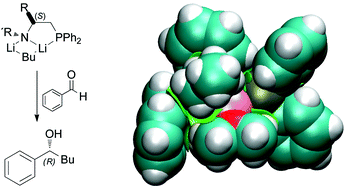A computational study of the enantioselective addition of n-BuLi to benzaldehyde in the presence of a chiral lithium N,P amide†
Abstract
In the presence of a chiral lithium N,P amide,

* Corresponding authors
a
Department of Chemistry and Molecular Biology, University of Gothenburg, SE-412 96, Göteborg, Sweden
E-mail:
stenil@chem.gu.se
Tel: +46-31-786 9103
In the presence of a chiral lithium N,P amide,

 Please wait while we load your content...
Something went wrong. Try again?
Please wait while we load your content...
Something went wrong. Try again?
P. Rönnholm, J. Gräfenstein, P. Norrby, G. Hilmersson and S. O. Nilsson Lill, Org. Biomol. Chem., 2012, 10, 2807 DOI: 10.1039/C2OB06910E
To request permission to reproduce material from this article, please go to the Copyright Clearance Center request page.
If you are an author contributing to an RSC publication, you do not need to request permission provided correct acknowledgement is given.
If you are the author of this article, you do not need to request permission to reproduce figures and diagrams provided correct acknowledgement is given. If you want to reproduce the whole article in a third-party publication (excluding your thesis/dissertation for which permission is not required) please go to the Copyright Clearance Center request page.
Read more about how to correctly acknowledge RSC content.
 Fetching data from CrossRef.
Fetching data from CrossRef.
This may take some time to load.
Loading related content
